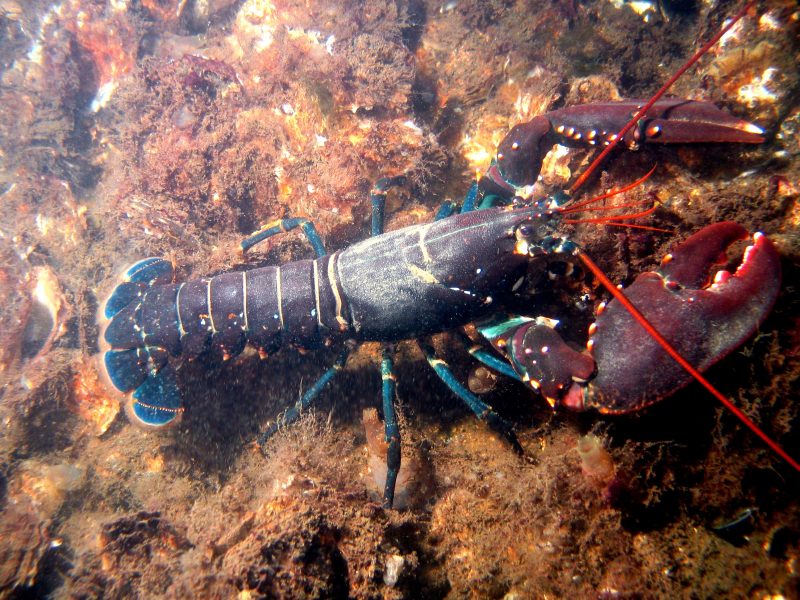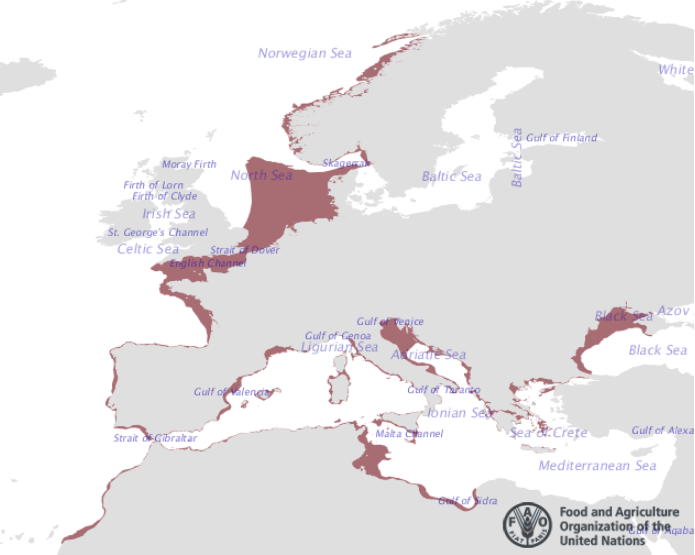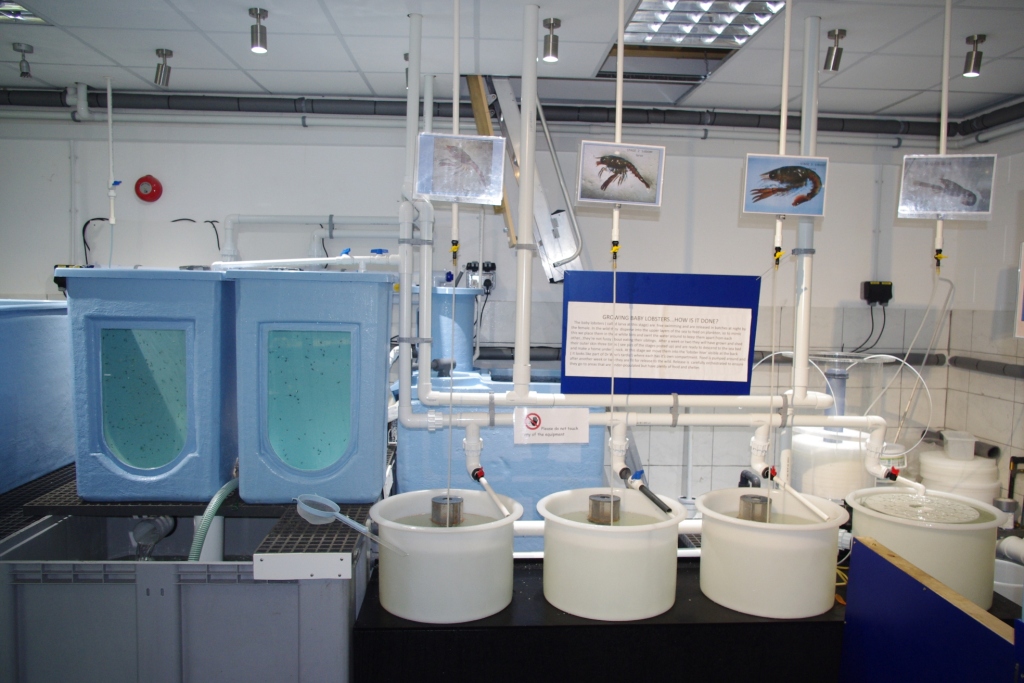Lobster

Scientific Name: Homarus gammarus
Also Known As: European lobster
MCRS: 87mm (carapace length)
Description
Lobsters possess two large claws, one blunt and designed for crushing and the other sharper and smaller normally used for slicing. Their exoskeleton is blue/navy on the dorsal side but slightly lighter underneath with an orange tinge.
Habitat and Distribution

Lobsters inhabit the lower shore up to a depth of 60m and are found on hard rocky substrates or compressed mud. They are nocturnal and territorial, usually living in holes, burrows or crevices. They are found on all UK coasts and inhabit North Atlantic waters from Norway to the Azores and the Mediterranean.
Life Cycle, Reproduction and Feeding
Diet is comprised mainly of benthic invertebrates including crabs, molluscs, sea urchins and starfish, but they are also known to eat fish and algae, and other smaller lobsters. They can be highly aggressive and fight other lobsters. Adult lobsters will typically roam to find food and have been known to search 10 km from their burrows. They hunt mainly at night.
Lobsters can grow up to a metre in length but will typically reach 50cm. Sexual maturity is reached at around six years of age, at a size of around 75-80mm carapace length for females and slightly less for males. Mating occurs throughout the year through copulation shortly after a female has moulted. Females carry eggs attached to pleopods (legs mainly used for swimming but sometimes used for brooding eggs or catching food) on the abdomen and are known as ‘berried’ for this time, which usually lasts 10-11 months. Fecundity depends on a number of variables, especially size of female, but can range from 5000 – 50000 eggs. Spawning usually occurs in summer and larvae are released into the water column, where they remain for around 5-10 weeks, undergoing metamorphosis. Survival rate of the pelagic larval stages is low due to high predation while they are in this vulnerable life history stage. Juveniles bury into the sediment where they remain for around two years, rarely moving. Lobsters are long-lived, with individuals known to reach 40-50 years of age.
Moult
Lobsters are a nocturnal species that hide during the day time in crevices or rocks. They are not able to grow linearly like most animals as they have a hard outer shell (exoskeleton) which does not grow with them. They must shed this hard exoskeleton and grow a new one, so they grow in increments. As they lose their exoskeleton they become ‘soft-shelled’, at this point they are very vulnerable to predation and it can take several weeks for a new outer shell to grow and harden. Lobsters are very difficult to age individually as they lose any age determining structures with every moult.
Additional Information
The Coastal Aquarium in Maryport has set up a lobster hatchery; berried lobsters are caught and delivered to the aquarium (with a special dispensation from NWIFCA). Once the eggs have reached the stage at which they can be removed the females are then returned to the same area from where they were caught. The eggs hatch into larvae and complete each of the four larval stages in tanks at the aquarium. This provides a valuable educational facility for the public. Once the larval stages are complete the aquarium returns the juvenile lobsters back into the sea to a similar habitat from where the adult female lobster was caught. This ensures lobsters survive the most vulnerable stages of their life cycle giving them a better chance of reaching adulthood and adding to the population.

In the NWIFCA District
Lobsters are fished commercially and recreationally within the District. As lobsters inhabit rocky ground, this determines where they can be fished which is mainly off the Cumbrian coast in the north of the district and around the rock armouring of developments like the windfarms and subsea cables.
Lobsters are fished using crab and lobster pots. Pots are set in fleets or strings which consist of a number of pots tied together which sit on the sea floor in a line. Weights are attached to either end of this string/fleet with marker buoys or flags at either end. Pots are baited to attract both crab and lobster and then left for a period of time known as the ‘soak time’ which can be from 24 hours to 5 days. The longer pots are left the more chance of the bait running out with an increase in risk of fighting and predation between animals trapped within the pot.
Where commercial potting occurs in Marine Protected Areas it undergoes an assessment to ensure the activity does not cause risk to conservation features. HRAs carried out for potting in the District’s European Marine Sites can be found here.